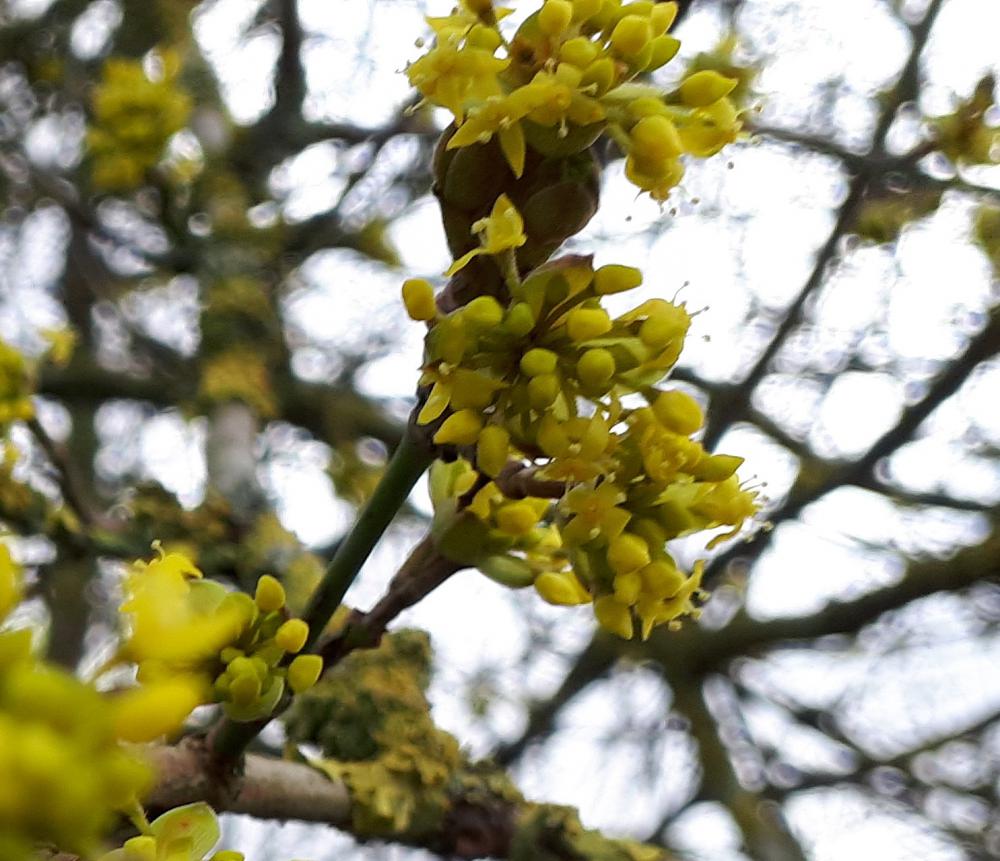

Low broad tree yellow flowers red fruits and good fall color

Smaller than the species, has heavy flowering Profile Video: See this plant in the following landscape: Cultivars / Varieties: VIDEO created by Andy Pulte for “Landscape Plant Identification, Taxonomy and Morphology” a plant identification course offered by the Department of Plant Sciences, University of Tennessee. Suckering can be weedy, so promptly remove them to avoid spread. Insects, Diseases, and Other Problems: No serious insect or disease problems. Dull green leaves on the upper surface, lower surface lighter green with tufts of reddish-brown hairs along the veins.Clusters of yellow blooms in late winter and early spring.The Japanese Cornelian Dogwood flowers earlier, the fruits ripen later, reddish-brown tufts of hair in the leaf veins, and the exfoliating bark is more attractive.įoliage: Fall Bloom: Spring Fruit: Fall Bark: Winter The Japanese Cornelian Dogwood is similar to the Cornelian Cherry (Cornus mas). The fruits are attractive to birds and plants provide nesting sites. Members of the genus Cornus support the following specialized bees: Andrena (Gonandrena) fragilis, Andrena (Gonandrena) Integra, and Andrena (Gonandrena) platyparia.

Grown as a shrub you can use it as a foundation planting. It works well in a woodland garden or naturalized area. The Japanese Cornelian Dogwood makes a great flowering tree with showy edible fruits. The red drupes are ellipsoid in shape and contain a stone. The undersides are a lighter green and may have tufts of reddish-brown hairs along the veins, The flowers appear as yellow clusters or umbels. The leaves are dull green on the upper surface. It can be challenging to find in the nursery trade but it is easy to transplant when young.
#Cornus mas in leaf full
It prefers acidic well-drained soil in full sun to partial shade, but protection from the hot summer afternoon sun. The plant has several other common names including Japanese Cornel, Korean Cornelian Dogwood, and Chinese Cornelian Dogwood. The species name, officinalis, means "sold in shops." This references the plant's use, supposedly, as a medicine. The genus name, Cornus, is Latin from the word, cornu, which means "horn." This references the hardness of the wood. It is typically found in forests, forest margins, and mountain slopes. It has been introduced in Japan and Korea. The Japanese Cornelian Dogwood is native to North Central and Southeastern China. The grayish-brown and exfoliating bark adds interest to a winter garden. Red fruits appear in the fall and are attractive to birds. It has low branches with an open oval to round habit. Yellow flowers bloom in late winter to early spring before the leaves emerge. The Japanese Cornelian Dogwood is a deciduous large shrub or small tree that is picturesque and multi-stemmed. Phonetic Spelling KOR-nus oh-fiss-ih-NAH-liss Description


 0 kommentar(er)
0 kommentar(er)
